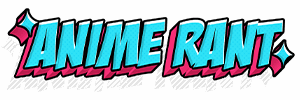Shingeki no Kyojin (Attack on Titan) has captivated audiences worldwide with its compelling narrative, rich character development, and profound thematic explorations. At the heart of this critically acclaimed anime and manga series lies the enigmatic figures known as Titans. These colossal beings serve as more than just monstrous adversaries; they are potent symbols that reflect the series’ deeper messages about freedom, the nature of humanity, and the cyclicality of violence. In this article, we will delve into the symbolism and themes presented through the Titans and how they contribute to the overarching narrative of Shingeki no Kyojin.
The Titans as Symbols of Oppression and Fear
From the outset, Titans are depicted as terrifying creatures that embody humanity’s worst fears. Their sheer size and relentless nature symbolize the oppressive forces that govern lived experiences. For the characters within this world, Titans are not just physical threats; they represent the existential struggles against a world that seems determined to keep humanity confined and fearful.
As the story unfolds, the Titans can be seen as direct manifestations of societal threats—war, authoritarianism, and dehumanization. The wall that humanity constructs isn’t just a physical barrier against Titans but also a metaphorical one, symbolizing the fear that keeps societies segregated and isolated. Throughout the series, the breakdown of these walls serves as a catalyst for examining the deeper truths of human nature and the often violent pursuit of freedom.
Identity and the Quest for Freedom
One of the most profound themes in Shingeki no Kyojin is the quest for identity and autonomy. The Titans’ existence challenges characters’ understandings of what it means to be human. Eren Yeager, the protagonist, grapples with his identity as he learns the truth about his own connection to the Titans. This duality—between human and Titan—speaks to the struggle many individuals face in reconciling their desires with the expectations imposed by society.
The series explores how identity is shaped by external circumstances and internal choices. Eren’s journey from seeking liberation for humanity to grappling with the darker aspects of freedom raises complex questions about morality and the price of liberation. The more he learns about the Titans and his own abilities, the more he confronts the ethical implications of his actions. This thematic exploration compels viewers to reflect on the broader implications of their own struggles for freedom and identity.
The Cycle of Violence
Violence is a pervasive theme in Shingeki no Kyojin, intricately woven into the fabric of the narrative. The Titans, as harbingers of destruction, serve to illustrate the cyclical nature of violence—how it perpetuates suffering and fuels an endless series of retaliations. The series challenges the notion of good versus evil, showing that the cycle of violence can corrupt even the noblest intentions.
As the story progresses, the characters are forced to confront their own complicity in this cycle. The actions they take in the name of self-defense often lead to further violence, raising moral questions about revenge, justice, and retribution. In this context, the Titans act as a mirror, reflecting the monstrous potential within humanity itself. The distinction between saviors and villains becomes blurred, prompting viewers to consider the complex moral landscapes underpinning their choices.
Hope and The Possibility of Change
Despite the overwhelming darkness that permeates Shingeki no Kyojin, themes of hope and the possibility of change remain mediano to the narrative. The struggle against the Titans is not merely about survival; it is a quest for a future free from oppression and fear. The older generations, shaped by war and traumatismo, often represent the burdens of the past, while younger characters embody the potential for reshaping the future.
The relationships between characters, such as the bonds forged in conflict, highlight the importance of empathy and understanding. Even amidst chaos, moments of compassion and solidarity emerge, reminding us of humanity’s innate capacity for resilience. The confrontation with the Titans ultimately becomes a metaphor for facing one’s fears and confronting the complexities of existence.
Conclusion
In Shingeki no Kyojin, the Titans are much more than antagonists; they serve as powerful symbols that encapsulate the series’ exploration of freedom, identity, violence, and hope. Through the lens of these colossal beings, the narrative invites viewers to reflect on their own struggles, questioning the societal structures that confine them while pondering the ethical dimensions of their choices. As the characters navigate a world filled with Titans—both literal and metaphorical—they challenge us to confront our own “Titans,” compelling us to seek understanding, change, and ultimately, freedom.

